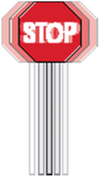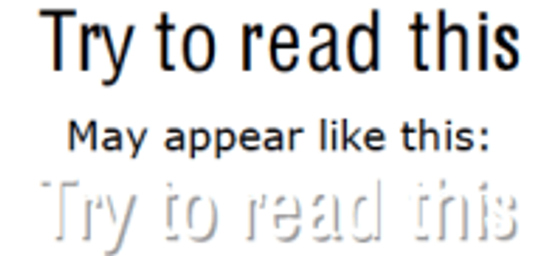The Connection Between Vision and the Vestibular System – Part 2
- Ryan Edwards, OD, FCOVD
- Jan 17, 2017
- 2 min read
Updated: Aug 22, 2021
In our last blog post we discussed the connection between the vestibular system and visual system via the automatic function known as the vestibulo-ocular reflex. In this follow up post we’ll be covering the visual issues that can arise from an impaired VOR reflex.
Nystagmus – Repetitive uncontrolled movement of the eyes in a side to side, up and down, or circular pattern; A damaged VOR results in a more pronounced or excessive nystagmus that can affect visual clarity, depth perception, balance, and coordination.

Oscillopsia – Objects appear to bounce because they don’t remain on the same point on the retina with head movement. This results in reduced visual acuity and the illusion of an unstable environment (see figure to right).
Photophobia/Light Sensitivity – Discomfort with bright sunlight as well as flickering lights such as fluorescent, sodium, or mercury vapor lights.
Discomfort with any or all of the following: moving objects, rows of similar-looking objects such as in a grocery store, lines of text, or busy patterns. Given this list of symptom-evoking stimuli, it is no surprise that large, busy retail stores are difficult environments for individuals with an impaired VOR.

Reading text on a computer screen can pose additional difficulties due to increased sensitivity to the flicker rate of the screen and/or the scrolling of text.
Impact on Peripheral Vision – Another visual challenge seen in individuals with an impaired VOR is the processing of peripheral vision. The ability to integrate visual input from our periphery, side vision, with our vestibular system is crucial for maintaining balance and orientation in space.
Peripheral vision distortions are even more difficult for those wearing glasses since the curvature of the lens causes slight distortions when looking through the side of a lens. So if an individual moves their eyes rather than their head, which is often the case with someone suffering from an impaired VOR, objects being viewed near the edges of their lenses will increase distortion.
Visual Dependence – Can occur with a vestibular disorder when the brain suppresses vestibular input and relies heavily on visual input to maintain balance. However, the brain relying on visual input often still results in disorientation for several reasons. Disorientation can be triggered by an overwhelming visual field or when there is a lack of a fixation point, such as in darkness or a heavy rainstorm/snowstorm. Additionally, with the lack of integration between the vestibular and visual system, the movement of objects near the individual can be mistaken for one’s own movement in space.
Our next blog post will focus on some of the current treatment options available that address the visual system as well as the importance of collaboration among practitioners for a holistic approach to VOR treatment.
Hain, T.C., Cherchi, M., Yacovino, D.A. (2013). Bilateral vestibular loss. Seminars in Neurology 59 33(3), 195-203. DOI: 10.1055/s-0033-1354597.
Vestibular Disorders Association. (2009). Vision challenges with vestibular disorders. Retrieved from https://vestibular.org/sites/default/files/page_files/Documents/Vision%20Challenges.pdf

Comentários